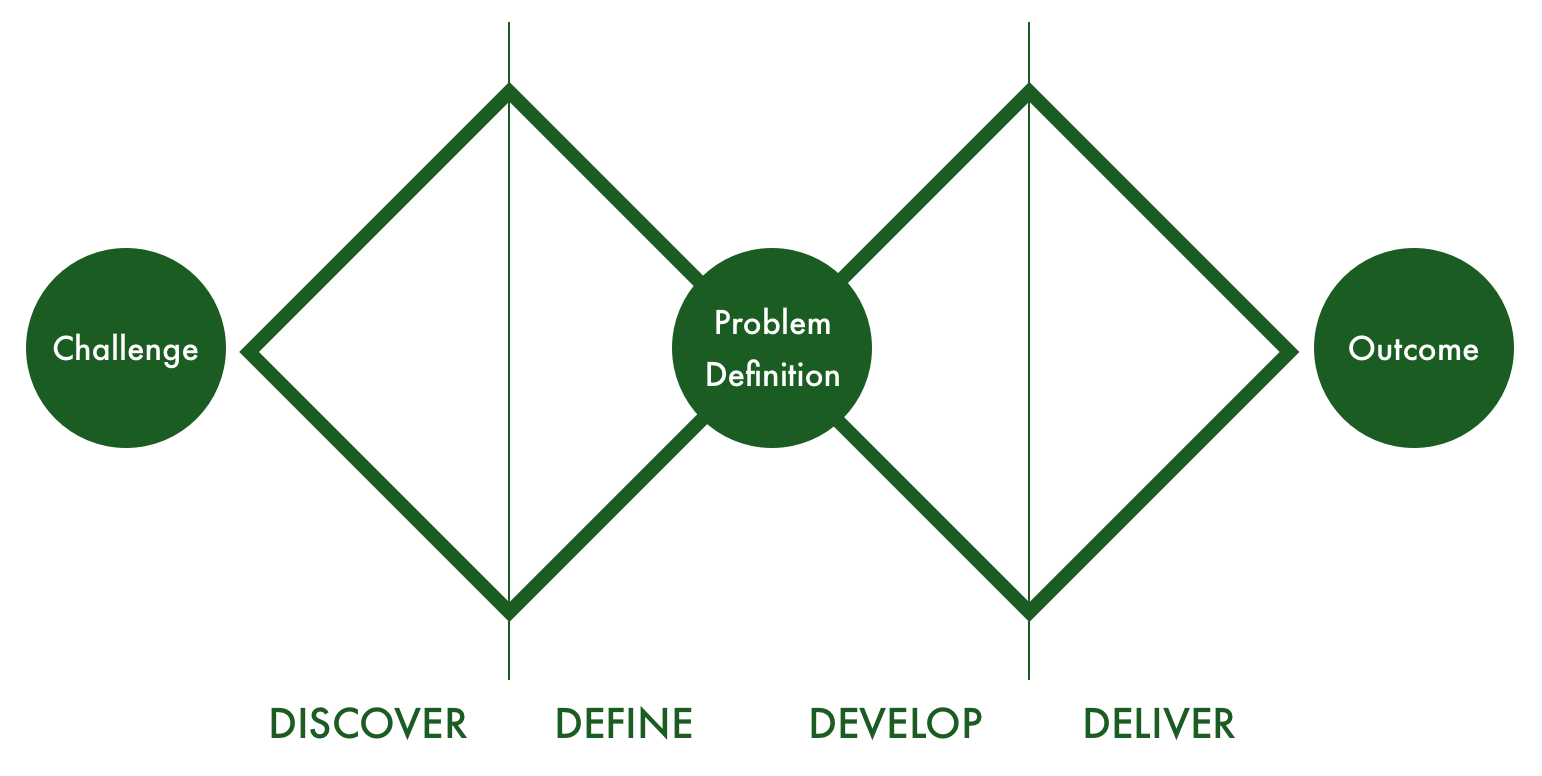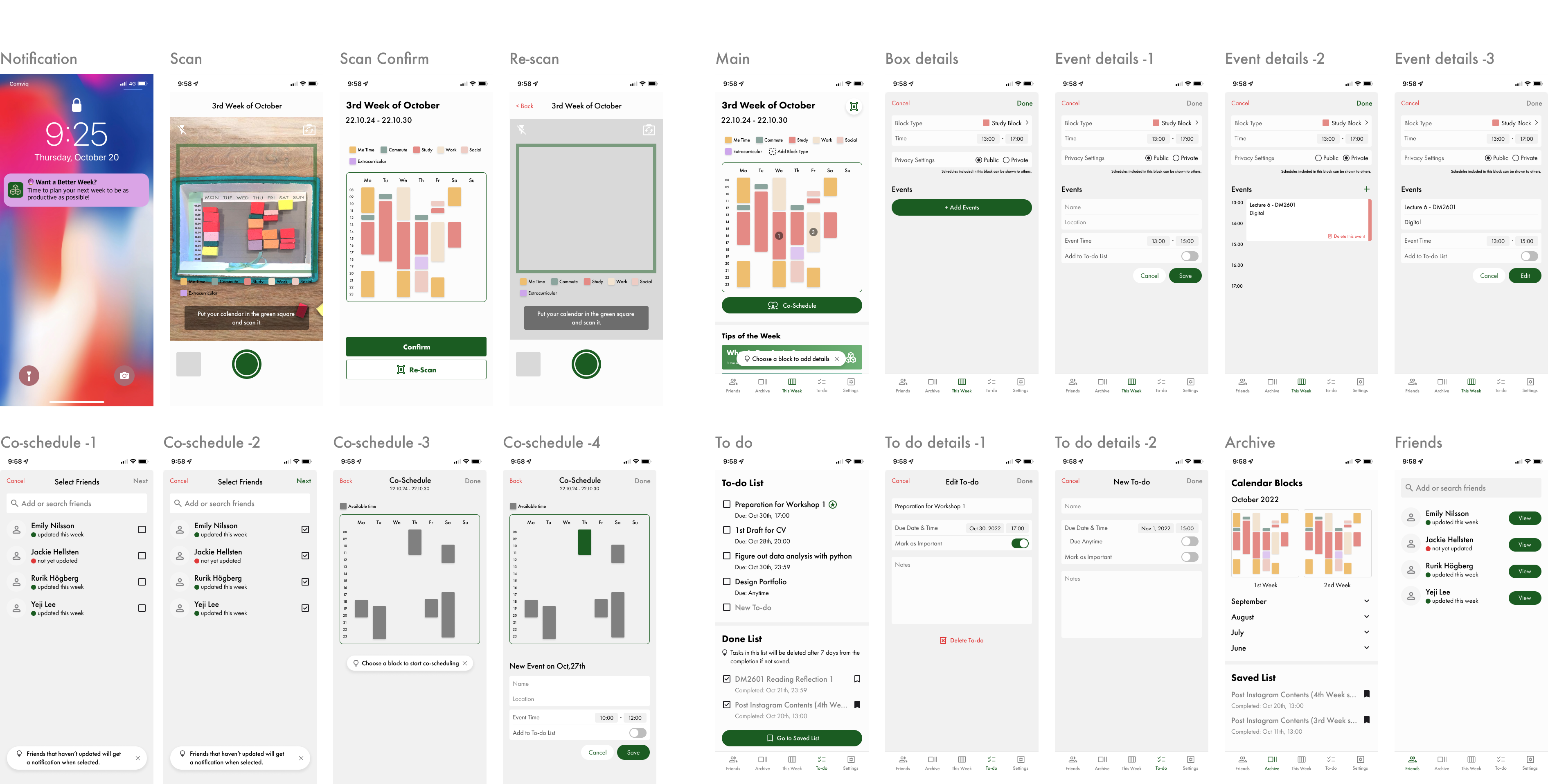Weekbox - Time Made Sense.
With the “time-boxing” method in the core, Weekbox is a calendar designed to help university students schedule their week better and easier. The calendar operates both in physical and digital.
Contribution
research ✺ concept design ✺ prototype
Team
4 Design-Engineer-researchers
Duration
2 months (Sep - Oct 2022)
Overview
The Challenge - The design brief required two big challenge to be solved - supporting introvert sctivites and benefit extroverts as well with the design based on introverts in our New Normal days. Based on our research on introverts in the school, we found out that they struggle with scheduling their week especially in the days where online and in-person courses collide, so we built the solution on this question: How might we make it easier for university students to streamline their daily activities?
The Solution - The team has come up of applying the "time-boxing" method, which is a time management method of allocating a fixed time and known to optimize productivity. We also found the the needs of our target users in both physical and digital calendars, leading us to design that could maximize the benefit of both integrated in one product.
Approach

Pre-User Survey
Based on our desk research and brainstorming about introverts and post-pandemic, we developed a pre-user survey to get general insights from the user group and strategically design our user interview. A total of 20 KTH students participated in the survey, and 80% of them answered to be introverts. The results revealed the problems students have with time management in hybrid study situations and particularly helped define introverts and extroverts, which was a main part of interpreting the design brief, as well as finding right candidates for our future user interviews.

User Interviews
We further conducted a total of 8 qualitative user interviews that would deeply explore KTH students’ daily lives and time management situations. The interviews gave us detailed insights into students’ problems and specific needs in day-to-day planning and time management. All interviews were transcribed and important quotes were extracted to a digital post-it in Miro in order to be analyzed.

Interview Questions

Some important quotes
Affinity Diagram
In order to analyze our data from the discovery phase, we used an affinity diagram to group common problems together, get an organized insight, and find key issues. Particularly, our core function, the time-boxing method, was inspired by this analysis.

Framing Design Challenge
To frame our design challenge and clearly align thoughts within the team before getting into the ideation phase, we used a framing method from IDEO’s Field Guide to Human-Centered Design. Through this method, we could come up with one clear question to solve: How might we make it easier for people to streamline their daily activities?

Brainstorming, Sketching, and Function Ideation
To start, each team member sketched out the idea in the post-it notes for brainstorming. Then, the team agreed on a general concept of the product and sketched a detailed version of the product as well as defining the function by interpreting our previous discoveries.

Sketching Ideas

List of Function
Lo-fi Prototype and Cognitive Walkthrough
The initial idea was materialized with sketched wireframes and simple materials. After creating these lo-fi prototypes, we performed a cognitive walkthrough using 8 different tasks from our main user flow of the product. This allowed us to evaluate the usability and learnability of the prototype since the main concept (connecting physical and digital) could be something unusual to the users. As a result, most tasks were evluated to be easy to learn and use, but it also led to major improvements, particularly in the details of the interface, such as UX writing.

Hi-fi Prototype, Usability Testing & Heuristic Evaluation
Then, we created a hi-fi prototype using Protopie and Figma to facilitate usability testing. First, we evaluated the design by giving users 8 different tasks to perform. The participants were also required to perform the Think-aloud method. Then, we went through a short interview with the participants regarding general feedback and thoughts about the design. In addition, we went through Nielson's heuristic evaluation criteria to make sure every part including the details of our design is user-centered. Through these evaluation processes, we were able to find important insights into how our design could be improved for the final deliverable.


Outcome
#1 Physical Aspect with Time Boxing
The aim of the physical product is to help students get a better sense of how they spend their time. The boxes are thought to make users reflect on the time in a new way - and that the physical interaction will make time more tangible.
The physical prototype consists of a number of magnetic boxes representing 1-2 hours slots that can be placed in your scheduling box. The different colors represent different activities such as work, me-time, and school.

#2 Digitalizing the Physical
Simply scan it, and you’ll easily save it in your phone.
#3 Co-Scheduling
Skip all the hassles for co-scheduling with your mates.
#4 Privacy Settings
When setting the details of each boxes, set the box to private if you want the plan to be private from others.
#5 To-Do List
Easily manage your daily To-Do list, remember what you have to do, and keep being productive!